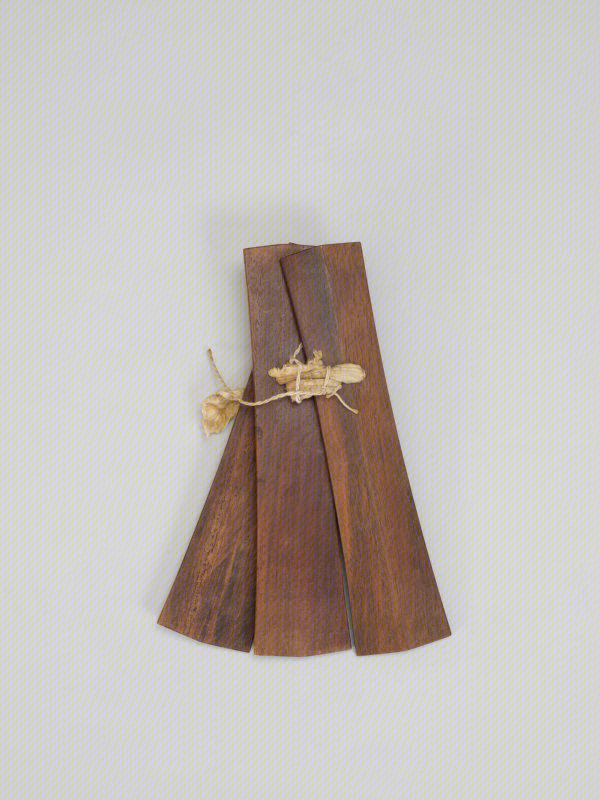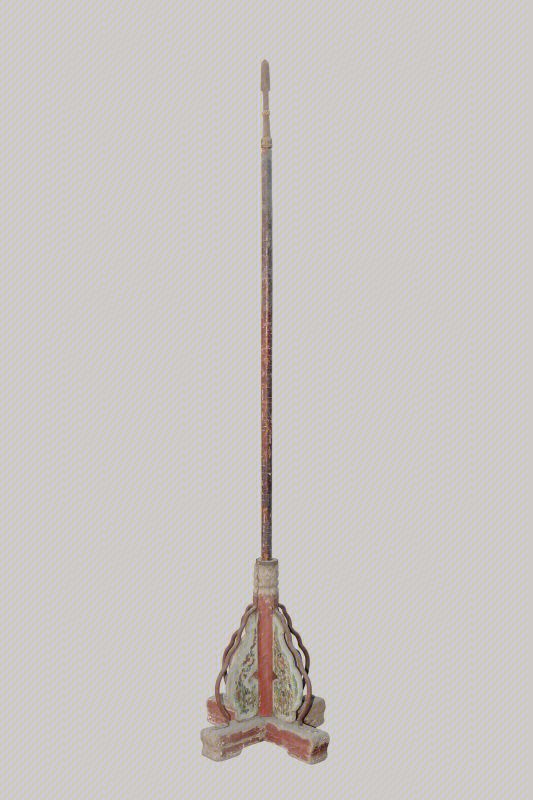
Red-lacquered Wood-framed Panpipe with Gold-painted Dragon-among-clouds Design
Period: Kangxi reign (1662–1722), Qing dynasty (1644–1911)
Medium: wood, bamboo
Dimensions: overall height: 33.7 cm, width: 35.8 cm, thickness: 3.3 cm, pipe-interior diameter: 0.9 cm
The panpipe is an instrument constructed with several vertically oriented flutes. The Chinese name, paixiao, is derived from the arranged row (pai) of bamboo flutes (xiao) of various lengths; it is also known as cenci (lit. “uneven layout”), bizhu (lit. “apposed bamboo”), and, due to its resemblance to unfurled phoenix wings, fengxiao (lit. “phoenix flute”). The sixteen bamboo flutes are of uniform thickness and arranged neatly with the embouchures on one level. The tone is determined by the length of the individual pipe: the longer the tube, the lower the tone. Each flute is inscribed in gold with the name of its corresponding note. Divided in two wings, the tones are arranged from low to high and correspond to the eight yang and eight yin notes of Qing-dynasty (1644–1911) music. The bamboo flutes are fixed inside a red-lacquered wood box embellished with a gold-painted design of two dragons frolicking with a pearl in a sumptuous imperial style.
In the Ming (1368–1644) and Qing dynasties, panpipes were used expressly in official harmonious musical ensembles (called zhonghe shaoyue) and belonged to the category of bamboo instruments in the traditional eight-tone harmony (bayin kexie), which symbolized the ultimate prestige of the deities of heaven and earth and the person of the emperor. The long history of the instrument’s use in ancient China begins in the Neolithic period. Stone panpipes have been unearthed from a tomb of the State of Chu dating to the latter centuries of the Spring and Autumn period (







